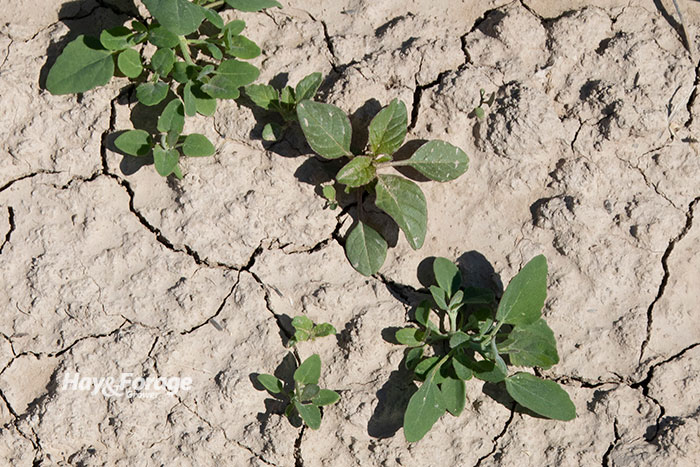
Many forage growers prefer to establish new alfalfa and/or grass seedings in the late summer rather than early spring. Fall conditions are generally ideal for seedling development and forage growth. Furthermore, annual weeds are much less competitive and those that do germinate die with the first frost.
Perhaps the biggest risk of seeding forages in the late summer entails dry soil conditions. Such a situation set up in some regions during 2022.
“Drought during late August and September will delay germination until favorable soil moisture is available,” notes Craig Sheaffer in a recent Minnesota Crop News article. “To germinate, alfalfa seeds must absorb over 100% of their weight in water. Delayed emergence caused by dry soils increases the risk of establishment failure through winter injury because seedlings do not have time to adequately develop crowns and roots. Plants with a high probability of survival will have at least four trifoliolate leaves,” the extension forage specialist adds.
Alfalfa seeds will germinate throughout the fall if soil moisture is adequate. In fact, seeds will germinate during winter if temperatures are 32°F or above, but the time needed for germination is extended. In the Upper Midwest, Sheaffer says that seeds germinating after mid-September often have little chance of developing into plants that will survive until spring.
Although the odds are low for late-germinated seedlings to survive the winter, an early and continuous snow cover of 6 inches or more that remains until spring may result in greater seedling survival than expected. Even if they do survive, seedlings with small root systems would still have to withstand the rigors of spring thaw and freeze cycles.
In Sheaffer’s state of Minnesota, seed germination and seedling emergence by early September will allow for eight or more weeks of growth before a significant killing frost. He says that alfalfa seedlings have good tolerance to air temperatures as low as 24°F.
“With normal late summer temperatures, seedling emergence is complete within two to seven days, and the unifoliolate stage is reached in about two weeks,” Sheaffer explains. “Contractile growth, which pulls the cotyledonary and unifoliolate nodes below the soil surface, and below ground crown formation begins as early as the unifoliolate leaf stage. This continues for about eight to 10 weeks after seedling emergence. The early growth cycle protects the new crown and crown buds from low winter temperatures,” he adds.
In addition to contractile growth, time is required for the development of three to four trifoliolate leaves. These produce the simple sugars and starch that are stored in the roots and are required for survival of the plants over winter.
Sheaffer points out that perennial grasses seeded alone or with alfalfa have an inherent advantage in tolerating late emergence. Grasses have what is called hypogeal emergence, which is characterized by the seed and growing point staying below ground and protected from winter injury.
Perennial grasses such as orchardgrass, perennial ryegrass, and meadow fescue still require the development of three to four leaves to raise the odds of winter survival.

